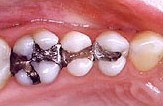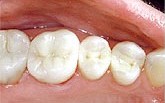Enfield Mercury-Free Dentist
,For many years the standard practice for filling a cavity, and the primary method taught in dental school) was to place what was referred to as a “silver” filling. The truth is those fillings, clinically called amalgam fillings, are actually made up of more mercury than silver—about 50 percent mercury. Some patients worry about that.
Trained for Composite
There are still dentists who prefer this “old school” method because that is what they are comfortable with, but with more modern technology and newer bonding materials, Dr. Cummiskey prefers to fill cavities with composite, a mercury-free material. Composite fillings take additional training to master tooth isolation, bonding, and curing techniques, but it was worth it to Dr. Cummiskey because, besides his patients’ concerns, there are several advantages to using it.
Advantages of Using a Mercury-Free Dentist
When your tooth is restored with a composite filling, it is bonded directly to the tooth. This is an advantage because much less of the healthy tooth structure has to be removed in preparation for the filling. The bonding seals adjacent vulnerable parts of the tooth against decay and the tooth’s strength is restored. There aren’t as many complaints of sensitivity because composite isn’t metal to conduct hot or cold sensations into the tooth.
One of the big advantages to a composite filling is how it looks. Composite fillings are tooth-colored to blend in with the rest of the teeth and are much more attractive. It can be difficult to distinguish between the tooth and the filling. See the examples below.

Teeth with amalgam or “silver” fillings.

Teeth after they have been restored with composite fillings.





